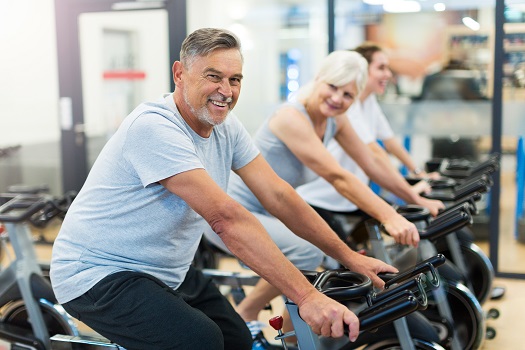
Today I led a small group of medical students on inpatient rounds. We had a patient on the seventh floor of the hospital. As I always do, I headed for the stairs, but told the students they could take the elevators if they wanted. (I promised them that they wouldn’t lose any points on their academic performance!)
And as they usually do, they decided to join me in the stairwell. Yes, we huffed and puffed a bit, but we still chatted, discussing fitness the whole time.
I take the stairs for many reasons, not the least of which is a frightening malfunctioning elevator experience from several years ago (a long story involving a team of maintenance personnel and a crowbar).
But a bigger factor is my own vigorous, unapologetic self-care regimen. I know I need regular exercise to maintain my mood and my health, so I fit it in wherever I can. If I have a patient on the seventh floor — or even the 22nd floor — I look at it as a terrific opportunity for a mini-workout in the middle of my workday.
We know it’s good for us, so why don’t we do it more?
The proven benefits of exercise are endless. Most people already know that mountains of research show that regular physical activity improves every aspect of our health: it decreases cardiovascular risk, manages stress, improves mood, delays dementia, eases chronic pain, and on and on.
Some people are committed to fitness and get more than enough exercise. But, most are not. One of the biggest barriers to regular physical activity is that it can be difficult to figure out how to “make” exercise happen.
Modern life is just so darned busy. Our workdays are long, our commutes are longer, and home responsibilities can easily take up the rest of our time.
Exercise as self-care
Here’s where the self-care concept is key: yes, I know that I need regular exercise to maintain my own mood and health, and as a primary care doctor, I know that everyone needs regular exercise to maintain their mood and health.
So how do we make this work?
1. Exercise doesn’t have to mean going for a run or to the gym. Any activity counts. The goal is to avoid sitting for prolonged periods. Let go of the idea that it needs to be an hour of aerobics class or spinning or a several-mile powerwalk or run. It doesn’t! There are great benefits from all activities for any amount of time: it all adds up.
2. Exercise can fit into the busiest workday. If you have to go to another floor, take the stairs. Try walking across the office to chat with a colleague, instead of sending an email. Someone going for coffee? Go with them. Your next meeting? Make it a walking meeting, especially if it’s nice out. If all you can do is stand up from your desk every half-hour and stretch, maybe walk around your office, then do that.
3. Keep track of what you do. If you have a wearable step-counter, this can be a fun way to keep track of your activity and your progress. If you realize you haven’t moved much one day, then try to get up and move around more. Invent a reason to go for a walk. It can be motivating to see how your stamina (in steps and flights) improves over time.
4. Make it fun! My kids love it when we do things together, and if it can be something active, we all get exercise as well. Win-win. We’ll walk or hike in the town park or nearby nature reserve; dance around the living room to boppy kids’ faves; jump on the trampoline; or I’ll run with them while they practice bike riding. I don’t care if I look silly (especially when we’re on the trampoline) because I know that all activity is good for me and for them.
If you think about exercise this way, none of us is too busy. And we all need to keep moving.
Official U.S. Physical Activity Guidelines for AdultsOur government has provided longstanding guidance on amount and type of physical activity, based on the evidence (and new guidelines will be coming out in 2018). All adults should avoid inactivity. Some physical activity is better than none, and adults who participate in any amount of physical activity gain some health benefits. For substantial health benefits, adults should do at least 150 minutes a week of moderate-intensity, or 75 minutes a week of vigorous-intensity aerobic physical activity, or an equivalent combination. Aerobic activity should be performed in episodes of at least 10 minutes, and preferably, it should be spread throughout the week. For additional and more extensive health benefits, adults should increase their aerobic physical activity to 300 minutes a week of moderate-intensity, or 150 minutes a week of vigorous-intensity aerobic physical activity, or an equivalent combination of moderate- and vigorous-intensity activity. Additional health benefits are gained by engaging in physical activity beyond this amount. Adults should also include muscle-strengthening activities that involve all major muscle groups on two or more days a week. |





